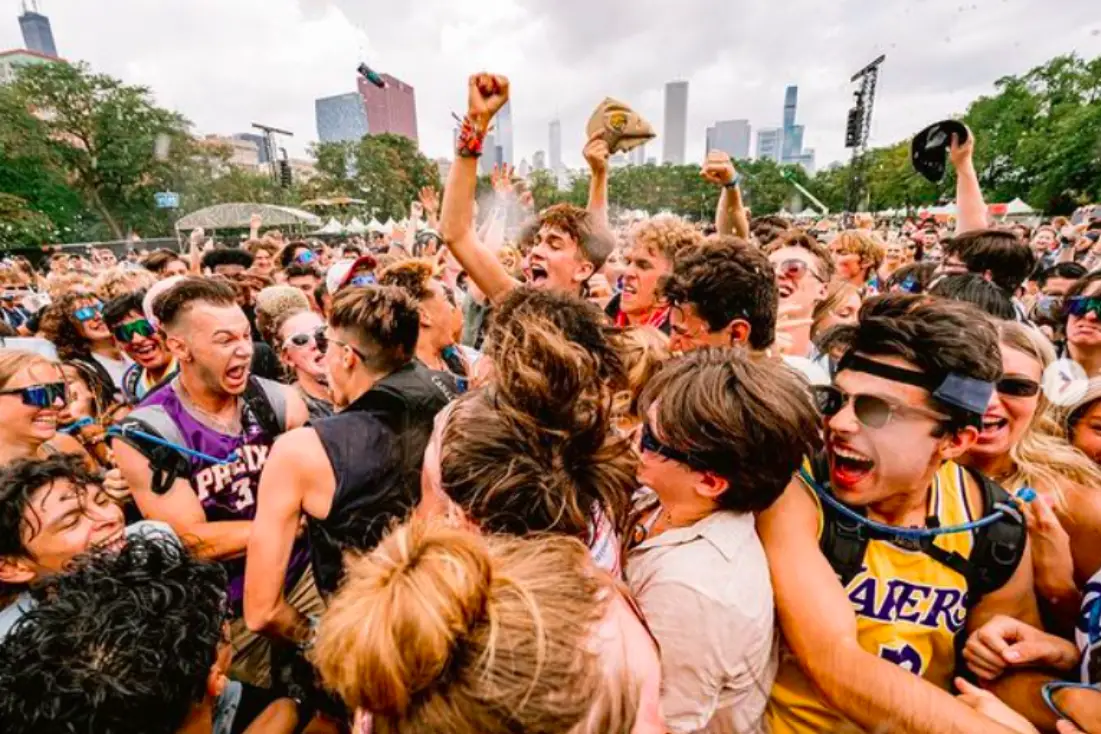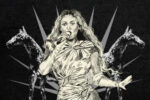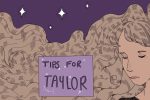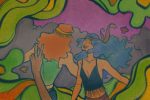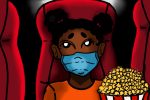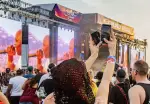A few weeks ago, I wrote about my fears and apprehensions surrounding 2021’s Lollapalooza festival — one of the first of its kind since the COVID-19 pandemic began. After Lollapalooza was initially canceled as an in-person event in 2020, it was rescheduled for summer 2021. The music festival boasted similar crowds to those of pre-pandemic performances. Despite various concerns over the spread of disease and the Delta variant, Lollapalooza persisted. The event allowed concertgoers their taste of normalcy after nearly a year and a half of living under the pandemic’s iron fist.
Before the festival, Lollapalooza outlined a series of safety measures for the festival and its concertgoers to follow. These included showing proof of vaccine or negative COVID-19 test within 72 hours of the first day. Those without either a vaccine or negative test were required to wear a mask or get a subsequent COVID-19 test. Although these safety measures seemed appropriate enough to me as I prepared for my time at the festival, I was relatively underwhelmed with what I saw upon my arrival.
What Lollapalooza Actually Looked Like
Though security measures increased in scrutiny during Lollapalooza’s four days, entering the festival on my first day came with striking ease. I went through three barrier points guarded by festival employees: one to oversee my vaccination record, one to scan my wristband and the last through a metal detector to ensure I wasn’t carrying any weapons or suspicious paraphernalia.
The mere glance at my vaccination record did not provide the confidence I hoped for before my arrival. But I suppose there’s no better way of checking, as fake and real vaccination cards or COVID-19 tests could look virtually identical. The only tangible measure of prevention was to turn me away should I come up empty-handed — which some did. Around 600 prospective attendees were denied entry on the first day for lack of appropriate paperwork.
Regardless, I accepted the possibility of contracting the virus after my first 20 minutes inside Grant Park. People walked around everywhere and moved in every direction. I felt if I stood still, the flood of concertgoers would engulf me. Stopping was not an option. So, we didn’t.
My friends and I walked immediately to the T-Mobile stage where Aly and AJ were set to perform. Hundreds of others followed our example. We settled on a spot slightly east of the stage, our small pocket of freedom among the sea of concertgoers. We stood atop the already flattened grass and orange-tinted dust that became synonymous with the festival itself. And we did this for every artist, at every stage, until the festival ended. Arms interlocked, we wove through the crowds and welcomed breaks in the current to catch our breath.
Okay, but How Was the Lineup?
Thankfully, the Lollapalooza lineup surpassed my expectations. Though only a few artists whom I truly love performed, I saw so many others I’d heard at parties or on the radio. Then again, that is the nature of festivals like these. Every headliner amazed me, as Miley Cyrus belted lyrics not only from her recent releases, but also some from her Disney Channel days. Tyler, the Creator drew an enormous crowd that spurred the dreaded “Delta Variant” Lollapalooza lineup meme. Post Malone’s voice echoed across the park as fireworks punctuated his performance. Even Young Thug’s replacement for DaBaby (due to his homophobic remarks) excited concertgoers.
Unfortunately, other artists underwhelmed festival patrons. Some greatly underperformed due to lack of preparation, such as G Herbo, who was a last-minute addition to replace Young Thug’s original slot. Others, such as JPEGmafia, merely yelled at their audience members instead of actually performing. Playboi Carti just told everyone in the crowd to “shut the f— up.”
Personally, however, I enjoyed the smaller artists I purchased my ticket to see. Gus Dapperton rocked the stage with his indie flair. Boy Pablo, known for his dreamy lyricism, exuded a subtle nervousness before mounting the stage but performed well nonetheless. I loved watching Brockhampton (my favorite group ever) garner a massive crowd at the Bud Light Seltzer stage, even if notable member Bearface was sadly too sick to perform.
Overall, I’m sure many other concertgoers would agree that the lineup and performances overwhelmingly impressed attendees. With a few bumps in the road and some technical difficulties, Lollapalooza pulled off a successful festival. That is, if your definition of the word denotes exclusively good music, good food and good vibes.
Going Forward, Let’s Change Some Things
Because I’ve now been to two outdoor music festivals, I know generally what to expect. One should anticipate long lines for food, water, bathrooms and even performances. That means camping out for artists I truly want to see and going to the bathroom during performances I don’t particularly care about. And my friends and I will remember to travel light and stay hydrated because the days are long, gruesome and overwhelming.
Since COVID-19, I and many others now have higher standards for cleanliness. I understand these are outdoor festivals, but the bathroom situation left much to be desired. Though some of the porta-potties used flushable technology, about half of them did not. That made for a daunting and unsanitary nightmare come the end of the day. Many of the stalls lacked toilet paper and hand sanitizer before the day’s end, causing concertgoers to simply go without. And as a woman, there were not enough stalls for the discreet disposal of sanitary items. That forced women to embarrassingly carry them out or simply leave them on the floor of the stalls. Most seemed to choose the latter.
Though the jury is still out on whether Lollapalooza 2021 turned out to be a super spreader event, some lessons can still be learned from its occurrence in tandem with the COVID-19 pandemic. Society should have higher standards for sanitation, such as appropriate bathroom facilities and more space for thousands of people to crowd. And the relative ease with which festival employees assured that concertgoers had vaccines or negative COVID-19 tests suggests our potential to conduct this practice going forward as cases surge and mask mandates falter.
When I bought Lollapalooza tickets in May, decreasing cases implied the end of the pandemic was in sight. Now, as cases rise again (even among the vaccinated) with the Delta variant, I am slightly more concerned than before. Though I will likely not return to my life in lockdown, I will perhaps rethink some of my riskier decisions as the pandemic continues. Though vaccines are effective at preventing serious illness, I still worry about becoming infected and infecting others. If attending Lollapalooza taught me anything, it’s just how precarious this situation is. But, since I’m still COVID-19 negative a week after the festival, I’m cautiously optimistic I got away with my attendance. I just need to continue to be careful going forward.


